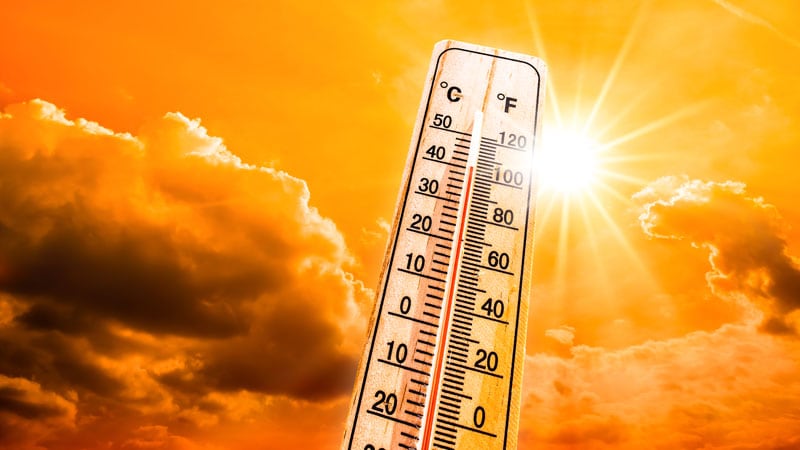The combination of heat waves and poor air quality is associated with double the risk of fatal myocardial infarction (MI), with women and older adults at greatest risk, a study from China suggests.
The researchers estimate that up to 3% of all deaths due to MI could be attributed to the combination of extreme temperatures and high levels of ambient fine particulate matter (PM2.5).
“Our findings provide evidence that reducing exposure to both extreme temperatures and fine particulate pollution may be useful to prevent premature deaths from heart attack,” senior author Yuewei Liu, MD, PhD, with Sun Yat-sen University in Guangzhou, China, said in a statement.
There is “long-standing evidence” of the harmful cardiovascular effects of air pollution, Jonathan Newman, MD, MPH, cardiologist at NYU Langone Heart in New York City, who wasn’t involved in the study, told theheart.org | Medscape Cardiology.
The added value of this study was finding an interaction between extreme hot temperatures and air pollution, “which is worrisome with global warming,” said Newman, assistant professor, Department of Medicine, the Leon H. Charney Division of Cardiology at NYU Grossman School of Medicine.
The study was published online July 24 in Circulation.
Intensity and Duration Matter
The researchers analyzed data on 202,678 adults (mean age, 77.6 years; 52% male) who suffered fatal MI between 2015 and 2020 in Jiangsu province, a region with four distinct seasons and a wide range of temperatures and ambient PM2.5.
They evaluated the association of exposure to extreme temperature events, including both hot and cold spells, and PM2.5 with MI mortality, and their interactive effects.
Among the key findings:
-
The risk of fatal MI was 18% higher during 2-day heat waves with heat indexes at or above the 90th percentile (ranging from 82.6° to 97.9° F) and 74% higher during 4-day heat waves with heat indexes at or above the 97.5th percentile (ranging from 94.8° to 109.4° F), compared with control days.
-
The risk of fatal MI was 4% higher during 2-day cold snaps with temperatures at or below the 10th percentile (ranging from 33.3° to 40.5° F) and 12% higher during 3-day cold snaps with temperatures at or below the 2.5th percentile (ranging from 27.0° to 37.2° F).
-
The risk of fatal MI was twice as high during 4-day heat waves that had PM2.5 above 37.5 µg/m3. Days with high levels of PM2.5 during cold snaps did not have an equivalent increase in the risk of fatal MI.
-
Up to 2.8% of MI deaths during the 5-year study period may be attributable to the combination of extreme temperature exposure and PM2.5 at levels exceeding World Health Organization air quality guidelines (37.5 g/m3).
-
The risk of fatal MI was generally higher among women than men during heat waves and was higher among adults 80 years old and older than in younger adults during heat waves, cold snaps, or days with high levels of PM2.5.
The finding that adults over age 80 are particularly susceptible to the effects of heat and air pollution and the interaction of the two is “notable and particularly relevant given the aging of the population,” Newman told theheart.org | Medscape Cardiology.
Mitigating both extreme temperature events and PM2.5 exposures “may bring health cobenefits in preventing premature deaths from MI,” the researchers write.
“To improve public health, it is important to take fine particulate pollution into consideration when providing extreme temperature warnings to the public,” Liu adds in the statement.
In an earlier study, Liu and colleagues showed that exposure to both large and small particulate matter, as well as nitrogen dioxide, was significantly associated with increased odds of death from MI, as reported by theheart.org | Medscape Cardiology.
This study was funded by China’s Ministry of Science and Technology. The authors and Newman have disclosed no relevant financial relationships.
Circulation. 2023;148:312-323. Abstract
For more news, follow Medscape on Facebook, Twitter, Instagram, and YouTube.
Source: Read Full Article
